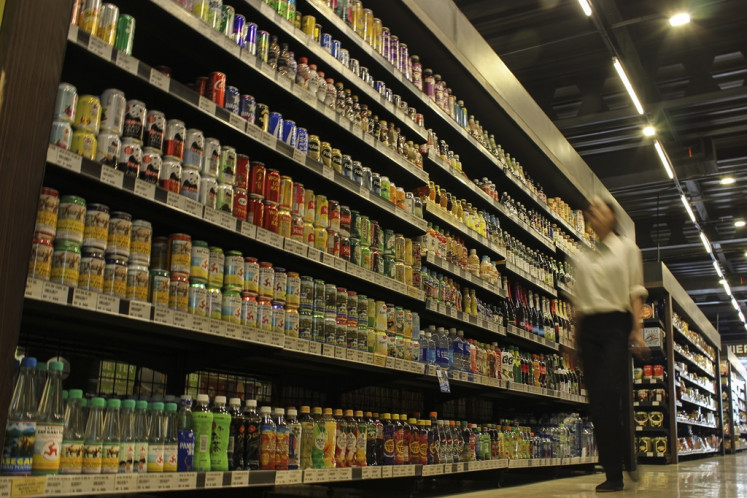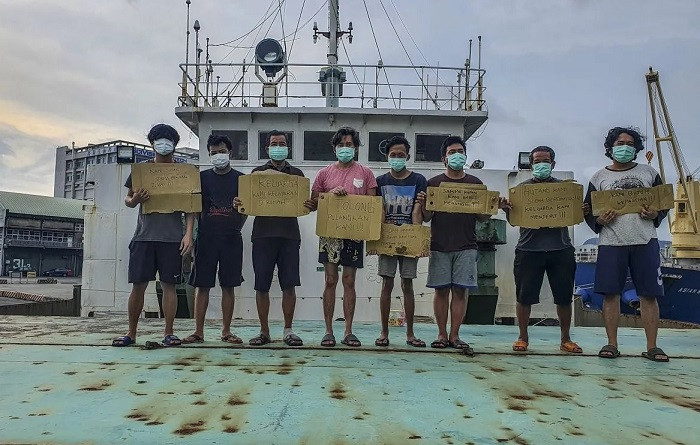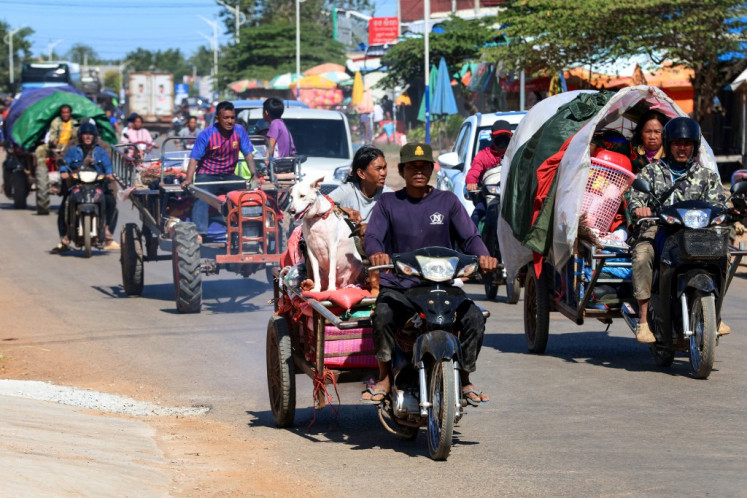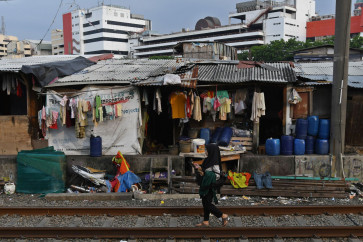Popular Reads
Top Results
Can't find what you're looking for?
View all search resultsPopular Reads
Top Results
Can't find what you're looking for?
View all search resultsMore extensive indicators of poverty line needed to better measure poverty incidence
It is time for Indonesia to adopt a multidimensional-poverty measurement officially as Malaysia has done since 2015 to complement its income-based poverty measurement.
Change text size
Gift Premium Articles
to Anyone
 A woman walks on a railroad track running by a slum in Kampung Bandan, Central Jakarta, on Oct. 14. Statistics Indonesia (BPS) reported that Jakarta’s poverty rate in March had increased since September 2021 by 3,750 to reach 502,040 people, or 4.69 percent of the city’s population. (Antara/Aditya Pradana Putra)
A woman walks on a railroad track running by a slum in Kampung Bandan, Central Jakarta, on Oct. 14. Statistics Indonesia (BPS) reported that Jakarta’s poverty rate in March had increased since September 2021 by 3,750 to reach 502,040 people, or 4.69 percent of the city’s population. (Antara/Aditya Pradana Putra)
T
he World Bank last September revised its international poverty line to monitor the development of global poverty. The update aims to better reflect the changes in consumption patterns globally by adopting the 2017 Purchasing Power Parities (PPPs) announced in May this year. Therefore, a better cross-country poverty comparison could be conducted.
The obvious impact of the update is the upward revision in the level of poverty both globally and at the country level as the cutoff increased from US$1.9 to $2.15 per day. It reflects the typical national poverty line of low-income countries and is dedicated to measuring the development of extreme poverty all over the world.
The revision increased the incidence of extreme poverty globally from 8.7 percent to 8.9 percent in 2018. For Indonesia, the increase was slightly higher from 2.2 percent to 3.5 percent in 2021. A more updated figure for Indonesia becomes possible due to better data availability.
The upward revision will change the strategy to end extreme poverty by 2030, which is Goal 1 of the Sustainable Development Goals. In this regard, Indonesia has an ambitious target to speed up the achievement of the target six years earlier in 2024.
However, with the new figure, the target of zero-extreme poverty by 2024 will become a mission impossible. It means that the rate of extreme-poverty reduction should be by around 1.2 percentage points per year in the coming years. That is a challenging task amid the gloomy picture of the global economy next year.
Moreover, the adjustment of subsidized-fuel prices in early September possibly will increase the extreme-poverty level due to the soaring inflation that eroded the people’s purchasing power, especially the poor. The main contributors to the inflation spike in September (year-on-year) were food and energy components, to which the highest proportion of poor people’s expenditures are allocated.
Moreover, the inflation spike triggered by food and energy components will also push the national poverty line up as the burden of people’s expenditures increase. Of course, social-protection programs targeted at around 21 million households will ease the burden.


















